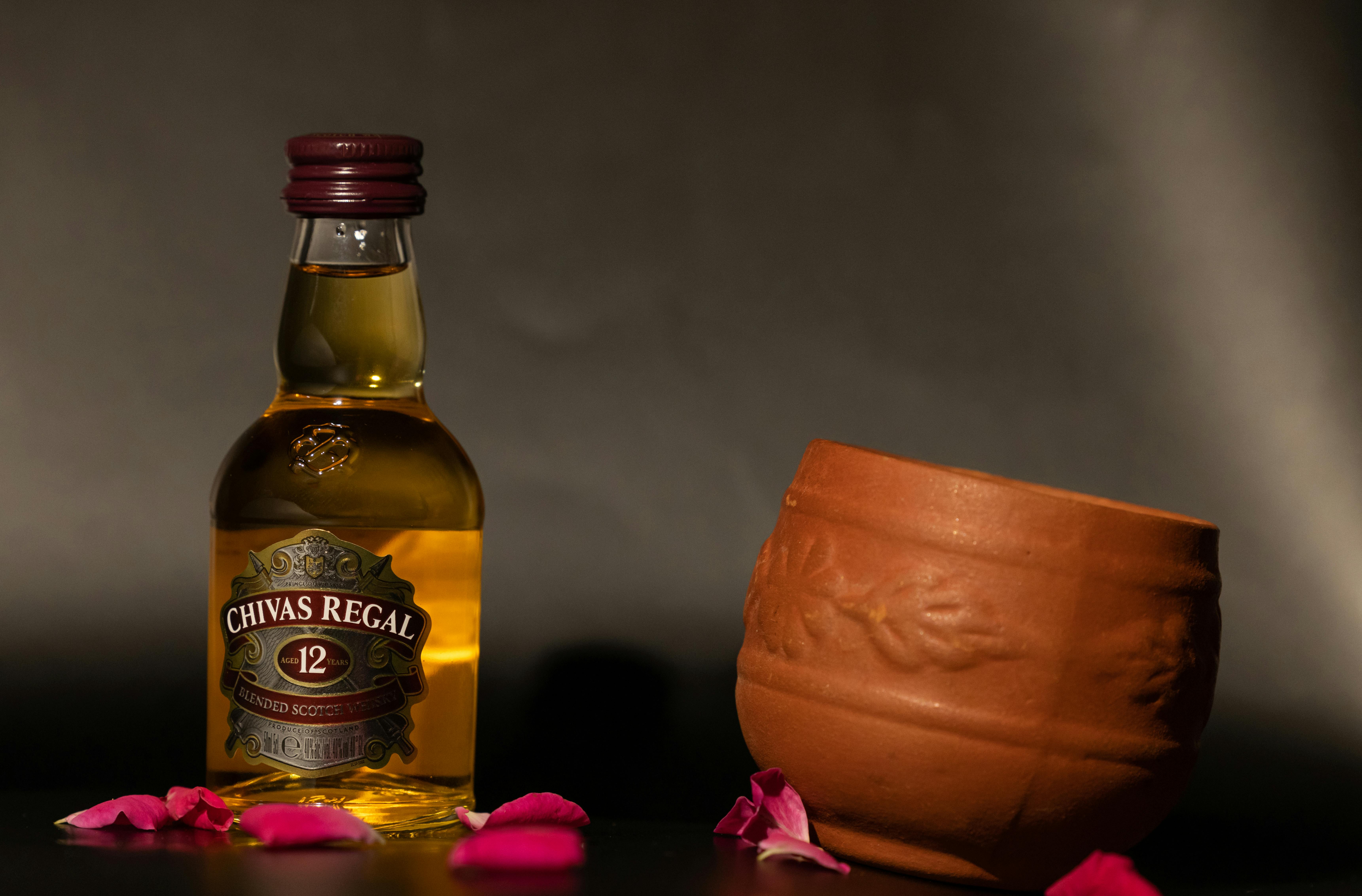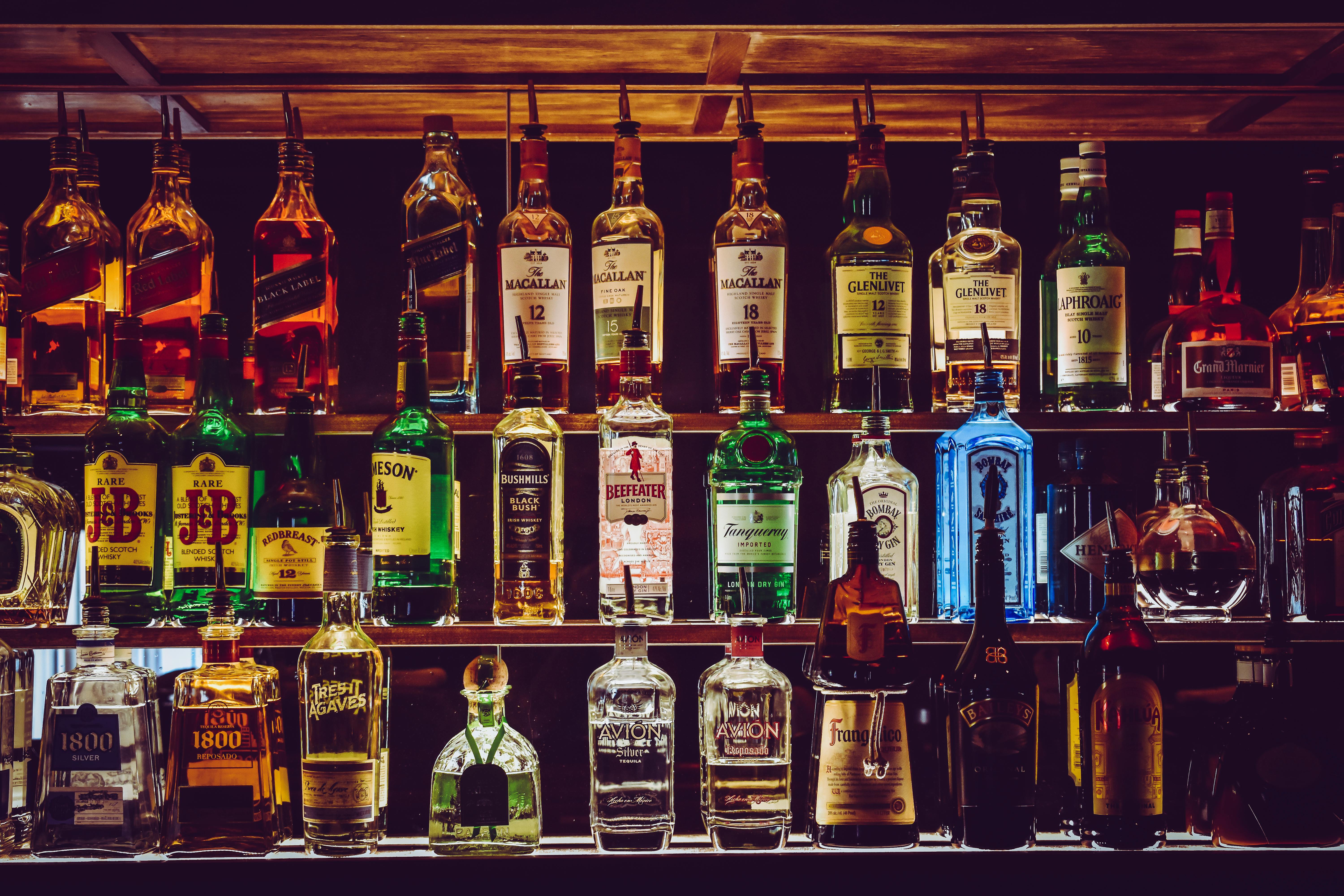Whiskey is a type of distilled alcoholic beverage made from fermented grain mash. The distillation process used to make whiskey involves separating the components of the fermented grain mixture so that the desired alcohol content can be increased. The process begins with a mash of grains, which may include barley, corn, rye, or wheat, along with any additional ingredients like sugar or flavorings. The grains are then mashed and heated in a large container called a mash tun. As the mash cooks, enzymes convert the starches in the grains into sugars. The resulting liquid is then transferred to a fermentation tank where yeast is added to turn the sugars into alcohol. From there, the liquid is moved to a still where it is heated to separate out the alcohol from water and other compounds. Finally, after distillation and aging in barrels, the whiskey is bottled and ready for consumption.Distillation is a process of separating and purifying substances by heating them to a boiling point, then cooling and condensing the vapor to collect the purified liquid. It is used for separating liquids from solids, as well as for separating two or more liquids from each other. Distillation can also be used to purify water or produce alcohol.
The Types of Whiskey and Their Distillation Processes
Whiskey is a type of distilled spirit made from grain, yeast, and water. It can be aged in wooden barrels for years to produce a unique flavor. Depending on the type of grain used, the distillation process, and the aging process, whiskey can be classified into several different types.
Scotch Whiskey
Scotch whiskey is a type of whisky made in Scotland using malted barley as its main ingredient. The barley is mashed and fermented before being distilled twice in copper pot stills. The resulting spirit is then aged for at least three years in oak barrels before it can be labeled as Scotch whiskey.
Irish Whiskey
Irish whiskey is also made from malted barley, but it typically uses unmalted barley as well. It is triple-distilled in copper pot stills and aged for at least three years in oak barrels before it can be labeled as Irish whiskey. This triple distillation process gives Irish whiskey its signature smoothness.
Bourbon WhisIngredients Used in Whiskey Making
Whiskey making requires several ingredients to produce the spirit that is enjoyed all over the world. The most important ingredient is, of course, grain. Commonly used grains are corn, rye, barley and wheat. However, other grains such as millet, oats or rice can also be used. Each type of grain brings different flavors and characteristics to the whiskey so the distiller must decide which combination of grains works best for their desired outcome.
The second ingredient that is essential for whiskey making is yeast. Yeast helps convert sugars into alcohol during fermentation and also helps create unique flavor profiles in the finished product. Different types of yeast are available to distillers and they must determine which type will give them the flavor profile they are looking for.
Water is another essential ingredient that whiskey makers need to take into account as it affects the flavor of the spirit as well as its strength. Distillers must use water with a consistent pH level to ensure a consistent quality of whiskey throughout production batches.
Finally, aging plays an important role in whiskey making and can add depth and complexity to the spirit’s flavor profile. Aging takes place
The Mashing Process
Mashing is the process of combining malted grains with hot water to create a mash, which is then separated from the spent grains. The mash is then boiled in a large pot, which produces wort. This wort is then cooled and fermented with yeast, producing beer. Mashing is an important step in the brewing process, as it allows for the conversion of starches and proteins into fermentable sugars and other compounds that can be used by the yeast for fermentation. It also helps to extract flavors from the malt and manipulate their characteristics.
The mashing process begins with crushing or milling the malt to expose its starches and proteins. This malt can then be combined with water at specific temperatures in order to begin the enzymatic process of converting these starches into fermentable sugars. Once this conversion has taken place, it is time to separate the mash from the spent grains. This separation can be done either by lautering or sparging, depending on the brewers preference.
Once this separation has taken place, it is time for boiling. During this stage, hops can be added for additional bitterness and flavor as well as other
Fermentation of Whiskey Mash
The process of fermentation is an essential part of whiskey production. During fermentation, the sugars present in the mash are converted to alcohol by yeast. The process of fermentation is carried out in a large vat known as a fermenter. The fermenter is filled with the mash and yeast is added. As the fermentation process progresses, the yeasts consume the sugars in the mash and convert them to alcohol and carbon dioxide. The carbon dioxide escapes from the fermenter while the alcohol remains in solution. The resulting liquid, known as wash, contains between 4-10% alcohol by volume. The wash is then distilled to produce whiskey. During distillation, the alcohol content of the wash is increased to around 40-60% ABV (alcohol by volume). This high strength spirit can then be aged in oak barrels for several years before being bottled and sold as whiskey.
The fermentation process affects both the flavour and aroma of whiskey, so it is important that it is carefully monitored during production. The temperature, pH level and oxygen content all play a role in determining how successful fermentation will be and these should all be carefully controlled throughout the process. Different types of

Distillation of Alcohol from Fermented Mash
Distillation is a process used to refine fermented mash into alcohol. The process involves boiling the mash, and then allowing the vaporized alcohol to condense back into liquid form. This method allows for a higher concentration of alcohol than what was produced in the fermentation process. Distillation has been used for centuries in the production of alcoholic beverages such as whiskey, vodka, and gin.
The distillation process begins by heating up the fermented mash in a still. As the mash heats up, some of its components begin to evaporate. The vaporized alcohol rises to the top of the still and is collected in a condenser. The condenser cools down the vaporized alcohol so that it can be collected as liquid form. Depending on the type of distillate, additional steps may be taken to further refine the product.
The yield of a distillation depends on a few factors such as temperature, pressure, and time. Generally speaking, higher temperatures will result in more alcohol being produced but at a slower rate. On the other hand, lower temperatures will produce less alcohol but at
Blending and Aging Process of Whiskey
The process of blending and aging whiskey is one of the most important parts of making this classic spirit. It takes years to perfect a whiskey blend and even longer to allow it to mature. The process involves carefully selecting a range of whiskeys, blending them together, and then aging them in barrels for several years.
The first step in the blending process is to select the right types of whiskey that will create the desired flavor profile. This can be done by tasting different whiskeys from different distilleries or from different vintages and determining which ones will best complement each other. Once the blend is selected, it is ready to be blended together in a large tank called a vat.
Once the whiskey has been blended, it needs to be aged in barrels for several years before it can be bottled. Different types of wood are used for aging, such as oak, sherry or cognac casks, depending on the desired flavor profile. The type of wood used affects how much color and flavor are imparted on the whiskey during the aging process.
The length of time that a whiskey spends in barrels also affects
Filtration Process Used in Whiskey Making
The process of filtering whiskey starts with the distillation process. During the distillation process, the whiskey is heated to a boiling point and then allowed to cool. This causes the impurities in the whiskey to separate from the liquid. The impurities are then removed from the mixture using a filtration process. The most common filtration method used in whiskey making is charcoal filtering. Charcoal filtering involves passing the whiskey through a bed of activated charcoal, which traps any remaining impurities and removes them from the liquid. This process leaves behind a clean, pure product that is ready for aging and bottling.
Another method used for filtration is called carbon filtering. In this process, carbon granules are added to the whiskey and allowed to settle out any remaining impurities. This method is often used in combination with charcoal filtering to ensure that all of the impurities are completely removed from the liquid before it is aged and bottled.
Finally, some distilleries will also use a centrifuge or other mechanical means of filtration in order to remove any remaining particles or debris from their product before it

Conclusion
Whiskey distilling is a complex process that takes time, skill, and patience. From the malted grain to the wood barrels, every step of the whiskey-making process has its own distinct flavor and aroma. Thankfully, whiskey distillers are using their expertise and knowledge to ensure that each bottle of whiskey is of the highest quality. Whether you are new to whiskey or an experienced connoisseur, there is something for everyone in the world of whiskey distilling.
The journey of a single malt whiskey from grain to glass can take years. But the end result is a spirit that will reward those who take the time to learn about it with rich aromas and flavors that can be enjoyed for years to come. With so many varieties available, distillers are continually trying new methods and techniques to create unique flavors and styles of whiskies for everyone to enjoy.

